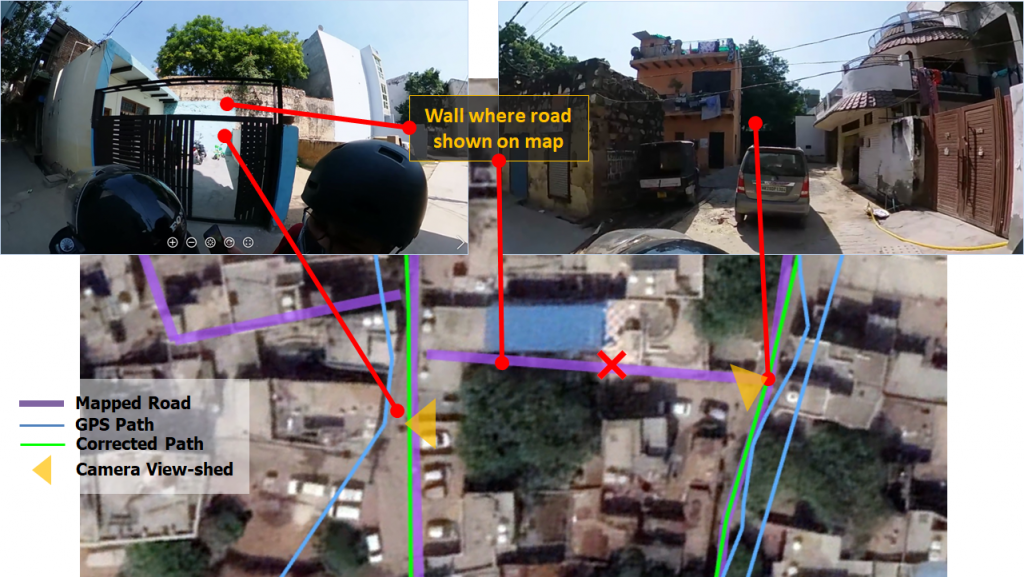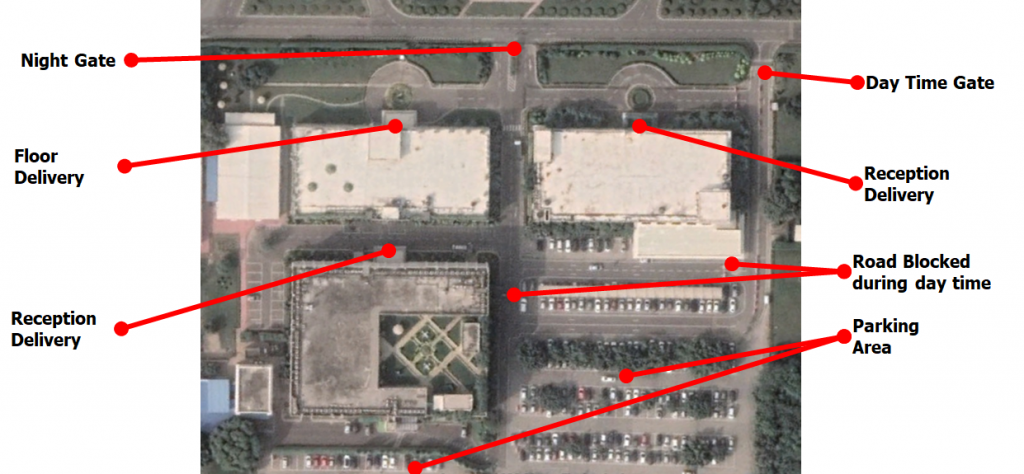
Do you know that E-commerce has evolved into a $4.8 trillion global market?
With the huge evolution of e-commerce, customers now expect deliveries to be faster and cheaper. But still many times they face pesky calls and delayed deliveries leading to low satisfaction with their chosen e-comm company. No wonder, even one bad experience causes customers to shift from one e-comm company to another!! With a large number of options to choose from, moving partners is easier.

Have you ever wondered why this happens? Well! One of the core reasons is BAD MAPS!! ‘The address issue’ happens because the e-comm companies are relying on ‘Consumer grade maps’ instead of ‘Enterprise grade maps’ for fulfilling their deliveries.
Prominent e-commerce players use swift ‘last-mile delivery’ as a key differentiator. Good quality maps define the delivery experience of both the customer as well as the e-comm company. When customers are looking for instant gratification, additional time lost on finding the exact delivery door location can mean operational losses besides the loss of customers’ trust.
Let’s understand…What is Last Mile Delivery?
‘Last Mile’ is the final phase in the delivery process when a parcel reaches the customer. While it may look like a minor step, it is the most expensive and time-consuming step of the whole fulfilment process. The need to deliver more packages accurately and at a lower cost and to meet customer expectations is increasing the pressure on e-commerce and hyperlocal companies.
Regular maps vs. Enterprise maps – Are these the same?
Have you ever wondered why the delivery partner is unable to reach your exact home location? – Even in the era where mobile maps are ubiquitous?
It is because, traditional maps are consumer grade and do not have the accurate last mile routes, parking locations and door locations. Due to lack of critical last mile data, the delivery partner wastes time in finding parking and even your door location. This problem specially becomes acute in congested and unplanned areas.

Bad Maps hit the bottom line of e-commerce
By increasing delivery costs and delivery time, bad maps negatively impact the bottom line of e-commerce/hyperlocal delivery companies. This impacts with:
- Wrong Map Locations: Consumer grade maps often show wrong locations such as incorrect addresses, incorrect land marks etc. They also lack contextual addressing defining locally recognized landmarks.
- Faulty Road Map/Route: Consumer grade maps especially those made from satellites often have wrong routes in dense urban clusters. Either roads marked on the maps sometimes don’t exist on ground or the road existing on ground is not marked on the map.

Figure 2: In consumer grade maps, many roads are wrongly marked leading to high frustration for delivery partners and pesky calls to customers. Such areas remain unserved even though there is no issue of affordability as can be seen by ownership of vehicles etc. In this example, there is a wall where a road is shown on the map. - Wrong Entrance/Door Location: The biggest problem with consumer grade maps is the lack of Last Mile data that is critical to e-commerce/hyperlocal delivery companies. This data such as correct entrance gate, correct door location, correct parking spots etc. is critical for any delivery partner to make the final delivery in less time. But unfortunately, the consumer grade maps don’t have any mechanism to incorporate such data through traditional mapping processes.

Who suffers from Bad Maps?
Bad maps cause problems to a variety of stakeholders who are involved in the e-commerce/hyperlocal logistics, including:
- Delivery Partners: Bad maps double the time and cost of delivery. As a gig-economy worker, the delivery partners end up paying financially for bad maps. Their issues include:

- High Costs: Waste time and fuel on wrong addresses and bad routes
- High Mental Frustration: Lower income due to bad maps causes high mental frustration as delivery partners lose money for no fault of theirs
- Lower Earning Potential: Wastage of time leads to lower earning potential. They often miss their bonus targets
- Safety Issues: Safe driving has become a major area of concern for delivery partners. Bad maps cause distracted driving as driving partners are forced to check maps again and again
- High Attrition: Lower earnings force driving partners to abandon the gig economy as the job fails to deliver both on income and job satisfaction
- Consumers: While consumers have largely benefited from e-commerce and hyperlocal logistics, they face multiple issues due to bad maps:

- Face Pesky Calls for locating address/route: Imagine being in an important board meeting discussing millions of dollars’ worth of proposals and being repeatedly called on the phone for a $2 delivery. Silent delivery continues to be one of the most violated KPI for most logistics companies. Pesky calls causes a significant fall in customer experience causing them to shift brands
- Face Delayed Deliveries: On-time home delivery is now an expectation for most of the customers. Often, customers plan for a delivery so that they can be at home to receive the important delivery. A delivery partner who is making multiple deliveries might get delayed causing much anguish to the consumer as they are forced to postpone or cancel their plans just for the sake of the delivery
- Remain in un-serviced area: e-Commerce/Hyperlocal companies fail to service unmapped areas due to high costs. Customers in such areas remain un-serviced leading to urban customers missing out on benefits of e-commerce/hyper local revolution
3. e-Commerce/Hyperlocal Companies: As e-Commerce/Hyperlocal companies burn cash in growing their business, bad consumer grade maps act as a drain on their already stretched resources in multiple ways such as:
- Bad Customer Experience: With rising competition, customers now have multiple options at their disposal. A bad customer experience such as a pesky call or delayed delivery can cause loss of a valuable customer which the e-comm company had gained by investing a significant amount
- High Delivery Partner Attrition: Bad customer grade maps lead to bad route planning and erroneous Earn-out calculations for the delivery partners. This causes significant strife with delivery partners as they suffer because of these miscalculations. This in turn leads to high attrition of delivery partners who are one of the most important component of the complete consumer experience for the e-commerce/hyperlocal delivery company.
- Lower Productivity: High delivery partner attrition in turn causes further lowering of productivity as new delivery partners take at least a month’s time to fully understand their delivery area. This adds to costs for the e-commerce/hyperlocal delivery company.
- Gaps in service areas: Badly mapped areas are often left unserved as delivery partners are hesitant to service such areas. These areas may constitute upto 40% to 50% of the complete city. Hence, e-commerce/hyperlocal delivery companies are not able to grow business in these areas simply due to lack of quality enterprise grade maps.
Converting consumer grade maps to enterprise grade maps
As the consumer keeps demanding faster and better quality delivery, e-commerce and hyperlocal companies can no longer ignore the huge losses being caused to their business due to usage of consumer grade maps for what is essentially an enterprise business.
Due to this issue, e-comm companies are facing an urgent need to set up specialized Geospatial/GIS units within their companies to upgrade the consumer grade maps to enterprise grade maps.
With location intelligence core to their business model, a key differentiator for the success or failure of the e-commerce/hyperlocal space has become the quality of maps which the company has managed to build.
The RMSI Enterprise Maps Advantage:
With over 5000 geospatial experts and 30+ years of experience in building maps, RMSI can add considerable expertise to partner with e-commerce and hyperlocal companies looking at building high quality enterprise grade maps.
RMSI has developed in-house GIS applications and mapping platforms to help e-commerce and logistics companies’ generate high quality enterprise grade maps. Specifically RMSI Enterprise Mapping solution helps e-commerce, hyperlocal and logistics companies by:
- Becoming an extension of the internal GIS division or by helping to setup a complete GIS unit.
- Managing map data from various global providers
- Managing internal GIS tagged data such as order journeys, time logs and delivery GPS traces
- Undertaking map gap analytics to identify leakages being caused by gaps in mapping data
- Map automation and algorithm development for automated map improvements
- Ground survey capabilities for mapping of last-last mile data
- Development of map reading skill training curriculum for on-boarding delivery partners
- Management of mapping API’s and SDK’s to optimize map related spends
We have been able to use our Last Mile Mapping services to the advantage of many clients. Recently, one of our clients, a large e-commerce company was facing losses running into millions of dollars due to faulty last mile data.
RMSI undertook a deep dive pilot project for the company and generated enterprise grade last mile data for the project area. Based on the success of the pilot project, the client quickly scaled up to multiple states and target areas. With our enterprise grade last mile data, we were able to generate savings in millions of dollars on account of recurring logistics costs.